The last time we talked about my painting, I showed you some of my recent pieces which tend to fall into 3 buckets: landscape, still life, portrait. I usually alternate between them, and generally have 2 or more works-in-progress, because I find the variety keeps my eyes fresh; if I work on the same painting for too long, I start to lose perspective. Anyway, today, I want to focus specifically on portraits because I think they illustrate my experience with process as a self-taught artist.
I’m going to start with a confession: I’m a very stubborn person. [Understatement of the year, my husband would say.] One of the ways in which that stubbornness manifests itself is in how I approach new skills; I tend to choose hobbies that I can feasibly learn without instruction. I like to learn as I go, and mostly by doing. Even something as simple as watching a how-to YouTube video (which I’ve had to do for knitting a couple of times) is the antithesis of fun to me. [Perhaps not coincidentally, knitting is the least favourite of my recent hobbies.] It’s quite possible that I would be a better crafter/painter/knitter if I took some lessons, but that’s not how I’m used to doing things, and well … I am stubborn.
It all started when I was about 14 and my family gifted me a box of Caran D’Ache watercolour pastels. I was not familiar with pastels or how to use them, but I played around with them until eventually I hit upon a technique that seemed to work. I used my fingers to rub in and blend the colours to a smooth finish (and developed some serious calluses in the process) that, in some cases, looked almost photo-realistic. I only have a few pieces left from those years, but they’re a good representation of my adolescent work:
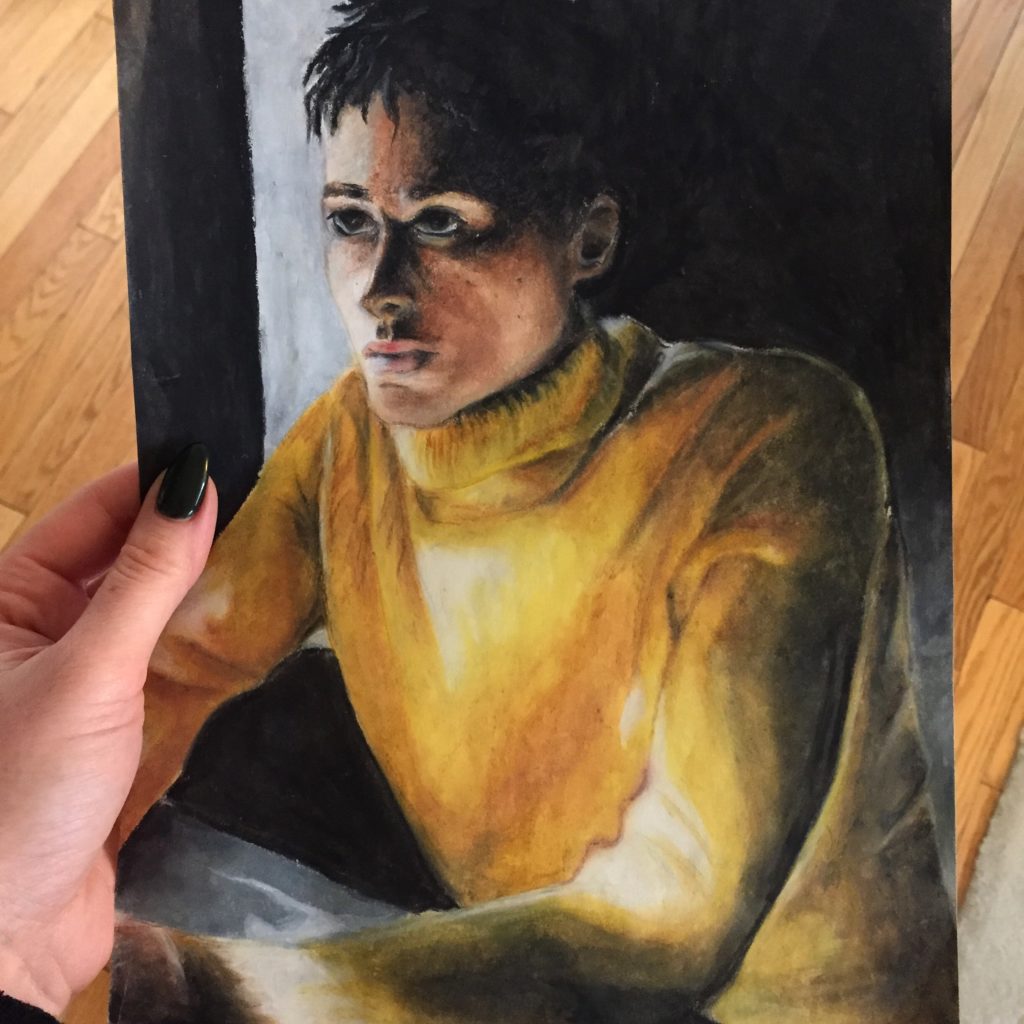
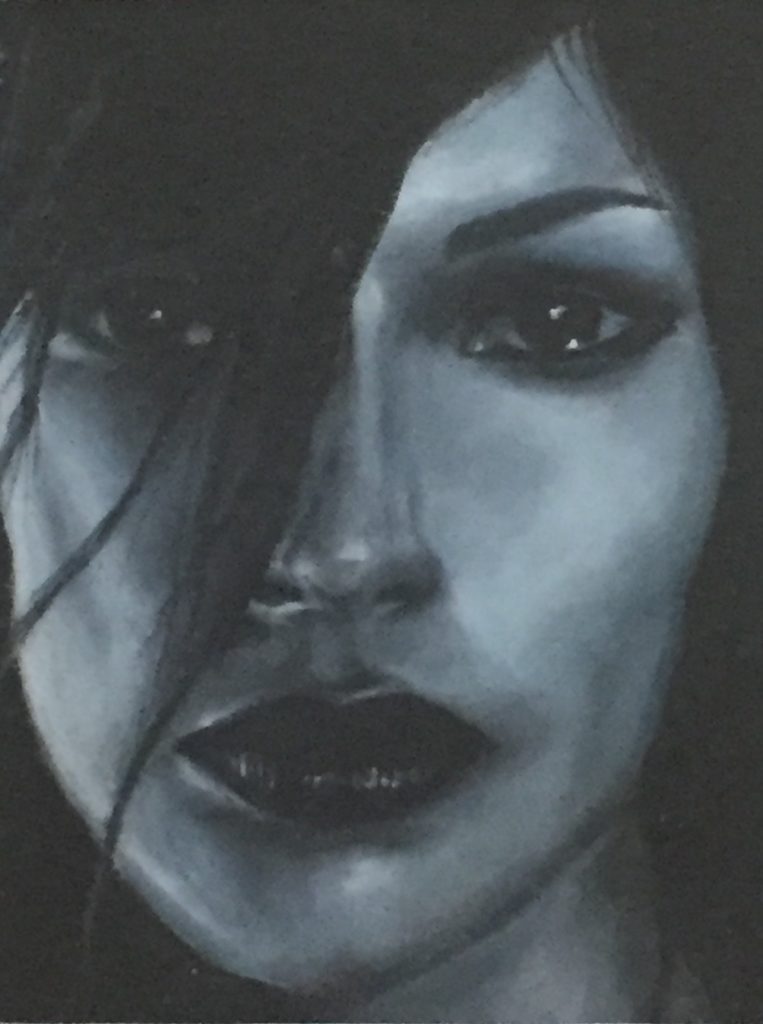
As you can see, I was quite interested in faces even though, objectively speaking, faces are challenging subjects. I’m not particularly good at drawing, and I can’t draw from memory/imagination so I have to rely heavily on photos for inspiration. When I started working with acrylics this past summer, it was a portrait that first drew me in.
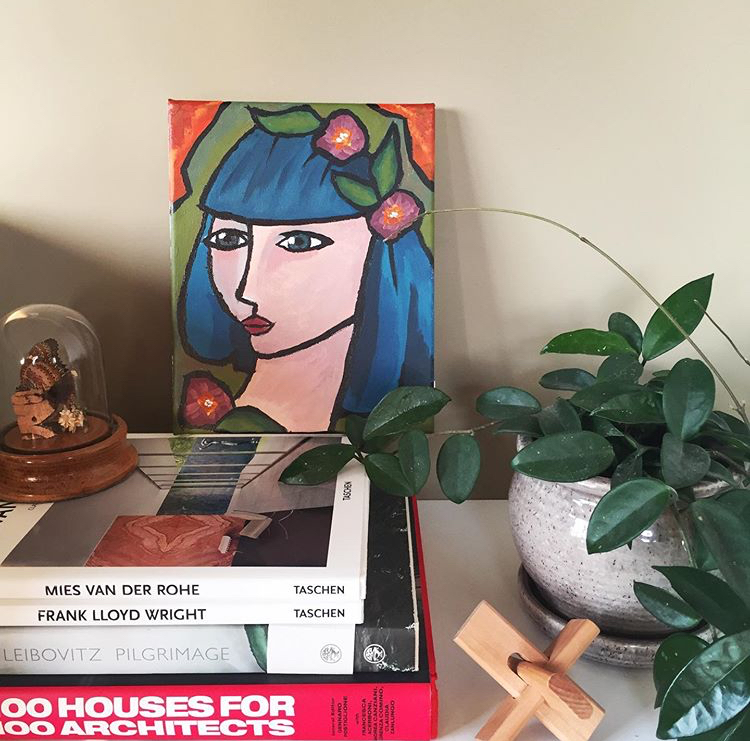
I quickly moved on to easier subjects because I had no idea how to use the medium to complete something that didn’t look like a Grade 3 art project. But, inevitably, I was drawn back to portraits. First, there was Grace:
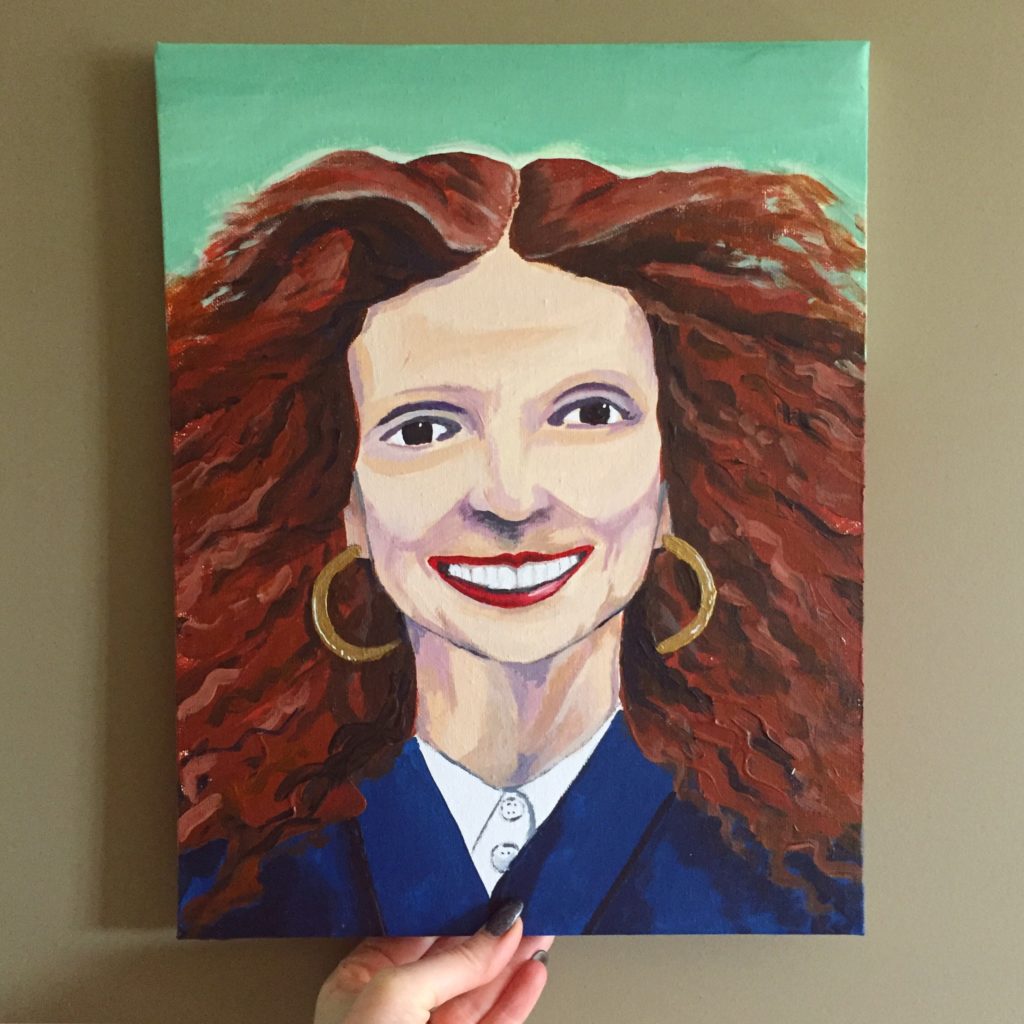
I did this without a pencil sketch to guide me, and while the shading is still quite rudimentary, you can already see the improvement over my first picture. I’m learning to trust myself with colours. One of the big lessons I explored with this portrait was the ability to layer. Acrylic is an accessible medium for beginners because it’s quite forgiving; up to a point, you can just pile on more layers of colours over any oopsies, and no one need be the wiser.
By the way, I use “lesson” in this context in a very ex post facto manner. I am not conscious of learning anything in particular while I am working on a piece; it’s usually afterwards, in retrospect, that I can say “ah, yes, I learned to do x while painting y”.
After Grace, my next 2 portraits were much in the same vein. First, there was Edith:
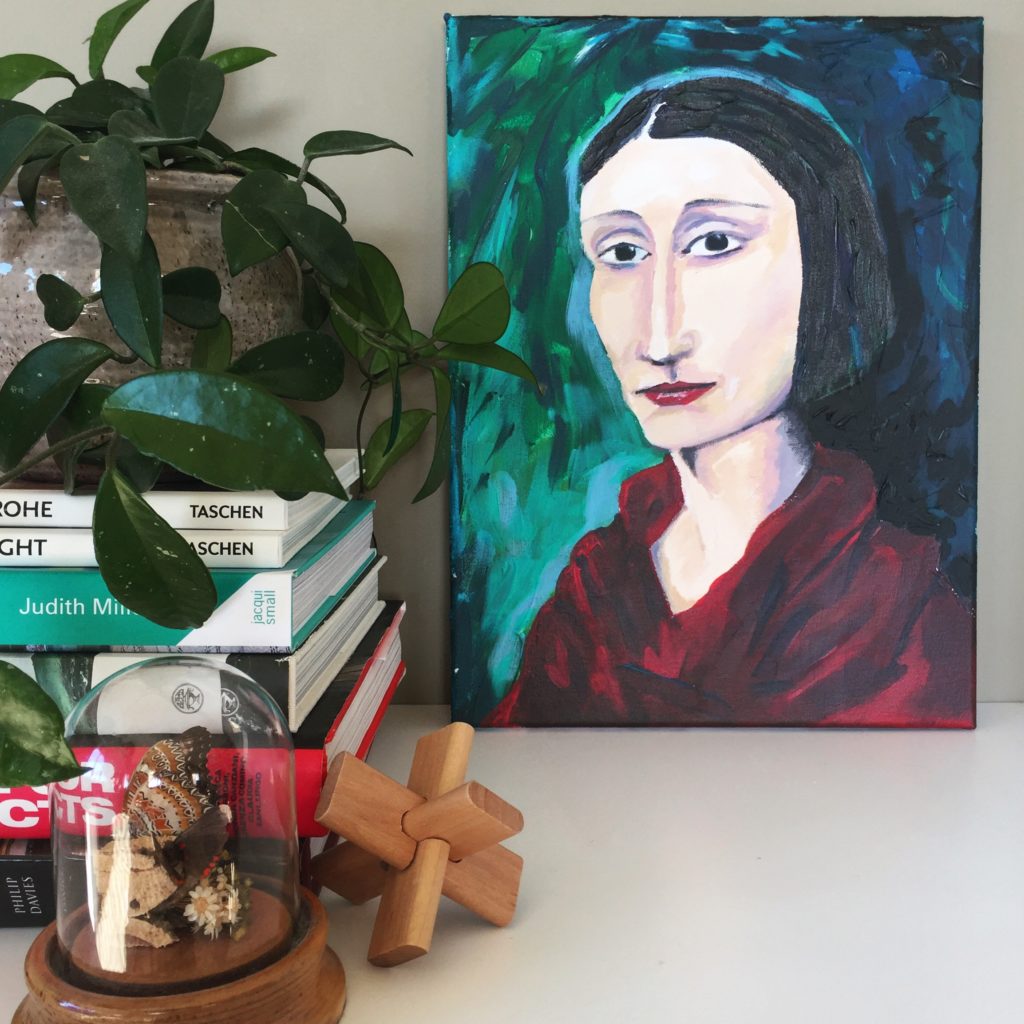
Edith exhibits a slightly more sophisticated technique than Grace, but not significantly so. It remains one of my favourite pictures because I love the colour scheme and the overall “naif” effect.
Then, there was the portrait I like to call “Tilda by the sea” (because it was inspired by 2 separate photos of a young Tilda Swinton, though there isn’t much likeness in the final product):


Tilda represents the final stage of this phase. The shading is much more subtle (and abundant) and the effect is more life-like and less caricature. I like the overall picture, but I didn’t feel like I captured the atmosphere/feeling that I wanted from the face itself.
After Tilda, I took a break from portraits for a bit and focused on other stuff. One thing I realized during that time is that some of best work happened when I was “doing my own thing” rather than trying to copy the style of paintings I found online. There is a temptation, when I see a picture I like online, to try to make my own version of it using the same approach; but the results are never satisfactory. I am much happier when I approach a subject matter using my own technique (such as it is). So, for example, my preferred approach to still life is semi-abstract, with clean lines and high contrast.
With this in mind, I tried a similar tack with portraits: a completely original piece.

It’s fine. I mean, I don’t hate it but I don’t love it. It’s very generic, which is a failure of my imagination. What I love about portraits is how unique faces are; I am especially drawn to dramatic, unusual ones but I have a hard time visualizing them from scratch. Counterintuitively, despite my slight disappointment with the Girl With Flower Crown, I decided to level up my portraiture. I decided to do a portrait of a man.
Now, even during my pastel heydays when I became quite adept at drawing faces, I was never very good at doing men’s faces. Not sure what possessed me, but I now decided to tackle this one:
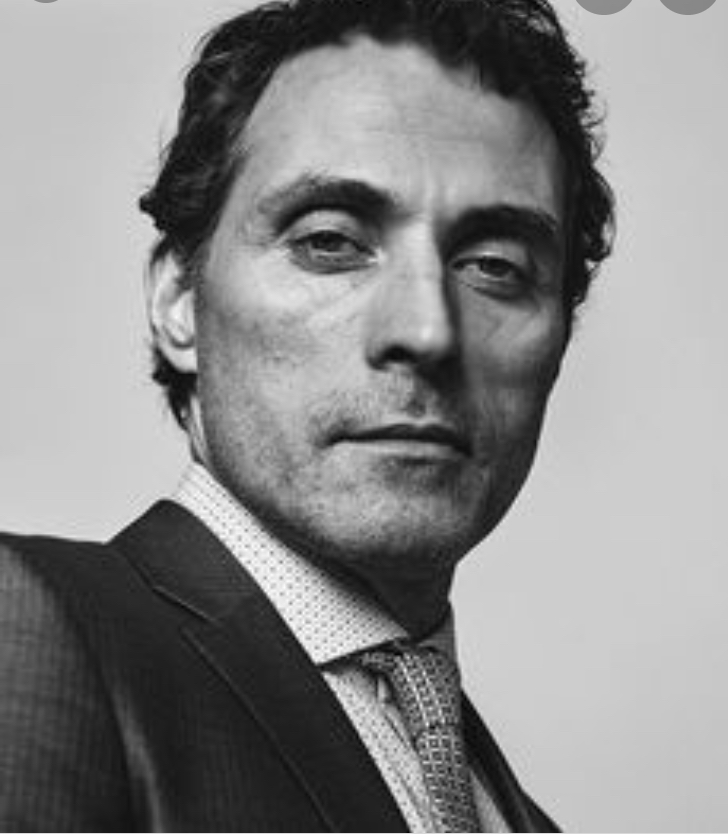
I’ve had a crush on Rufus Sewell for 20 years, but his is not a conventionally pretty face; it has sharp, almost precipitous angles, heavy lidded eyes, thin lips – all challenging to capture. When I was Googling photos for inspiration, I was lucky enough to stumble on this one:
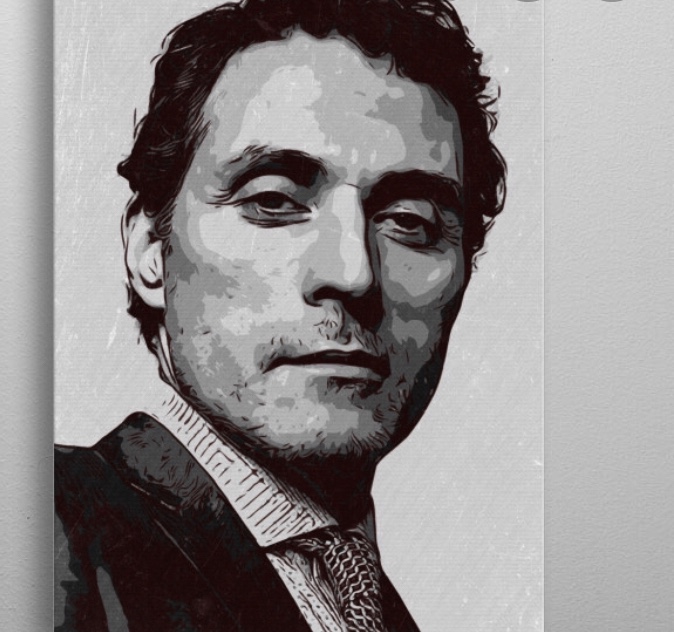
Not, perhaps, his most photogenic shot but I was struck by something else. The pixelated effect was like a “cheat sheet” for shading. I also approached this portrait in a different way. As with my other portraits, my first “pass” was a general one – the purpose of which is to get the general shape of the face and base skin colour down on paper. Next, instead of continuing to work on the face as a whole, I began to focus on sections separately. I would enlarge the corresponding section of the inspiration photo and look very closely at the shadows, lines, etc. I did several passes this way, section by section; with each one, the verisimilitude improved. You can see my progress here:
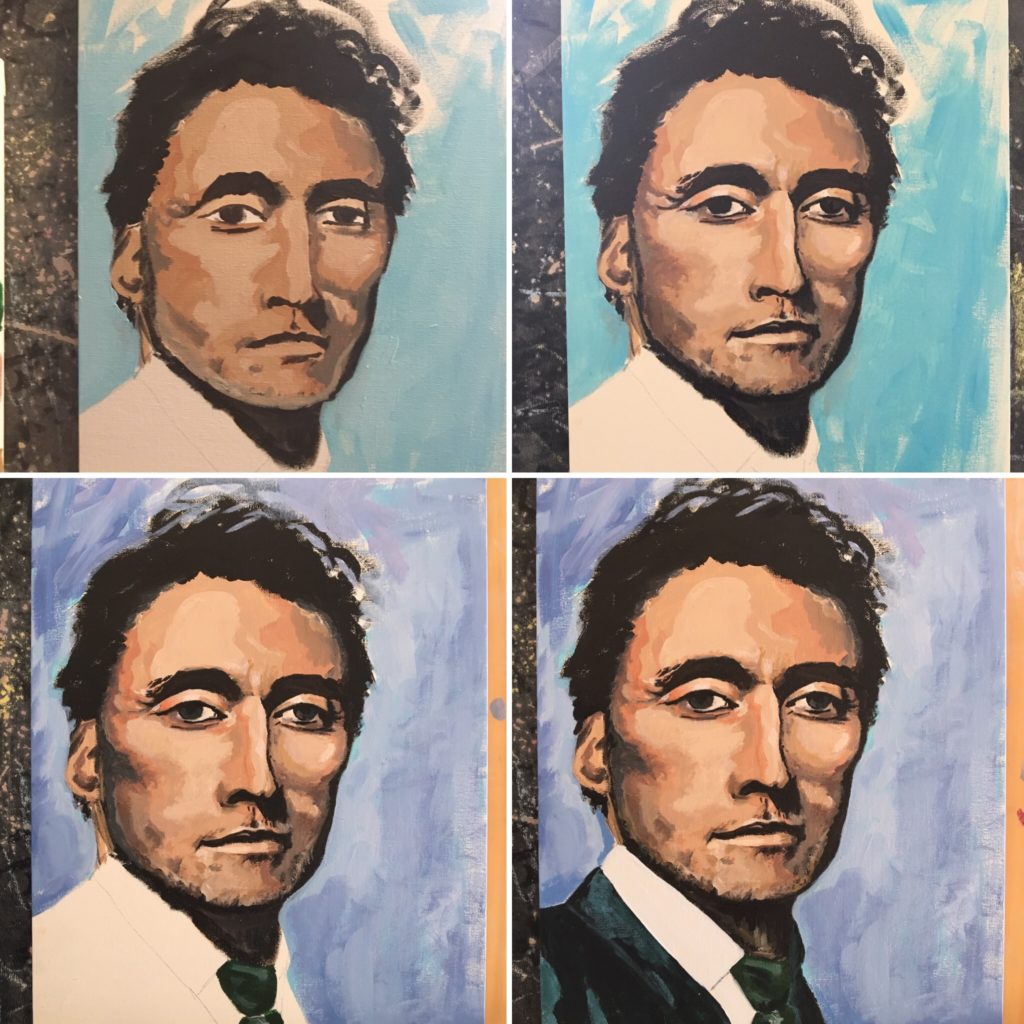
And here is the finished portrait:
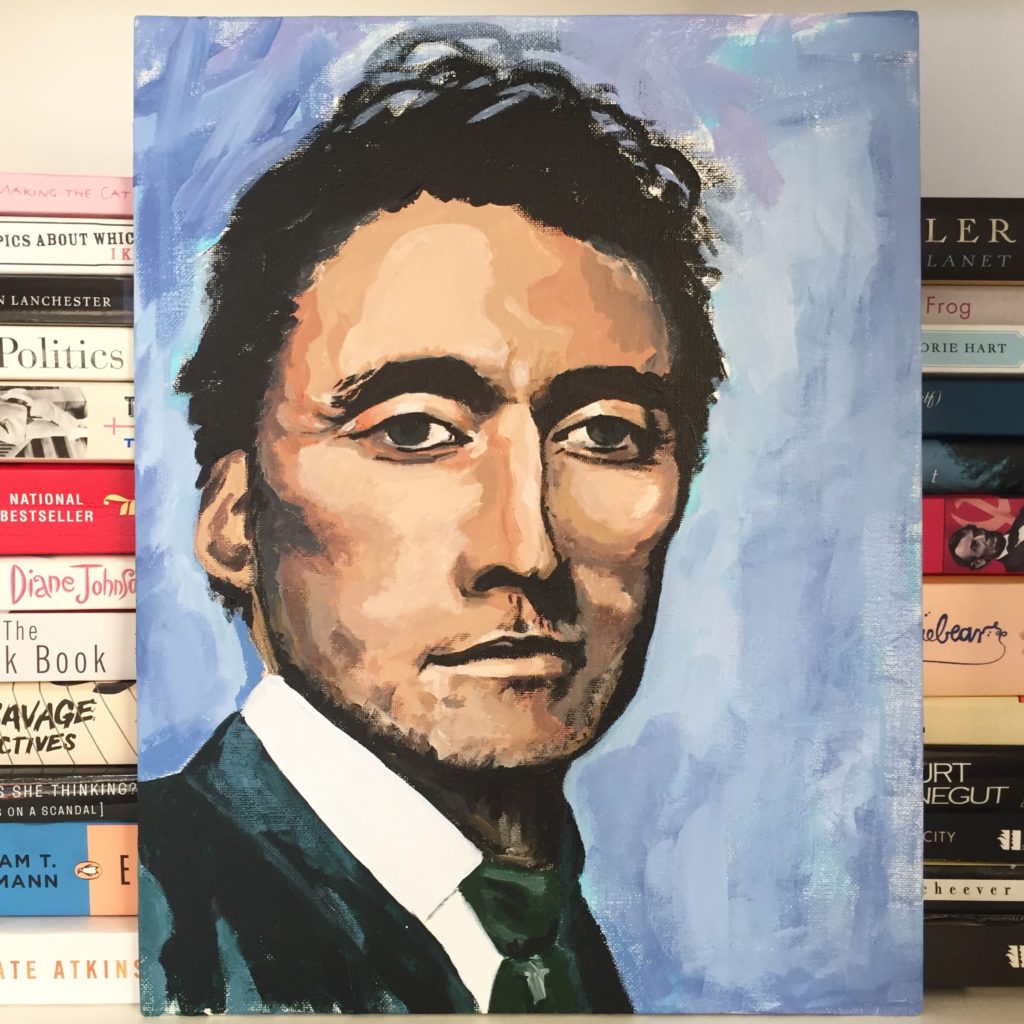
You can see how it’s a “quantum leap” from Tilda. What I learned during this process was to break down the components of a face and teach my eye how to see the shape of features and shadows versus just their overall appearance. It’s hard to explain. It’s the difference between seeing a nose, or the various shapes that make up a nose (and which, individually, don’t resemble a nose at all).
What I learned with Rufus, I put to good use with my next subject, Alek. This was the inspo photo I selected:
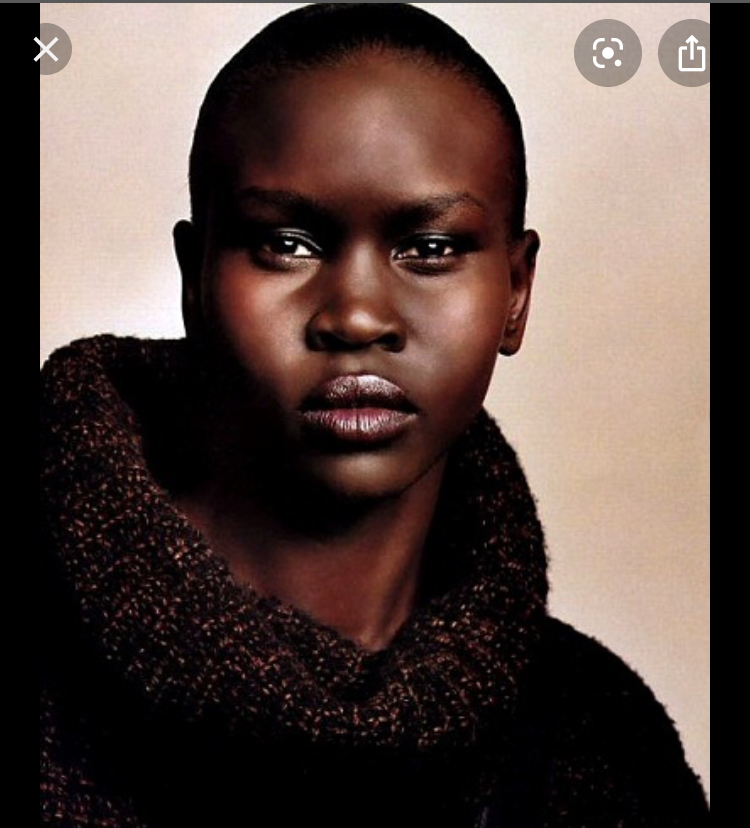
I chose it because the dramatic lighting highlights the amazing angles of her face. And, I am not going to lie, I am very proud of my portrait, which is currently my favourite thing I’ve ever made:
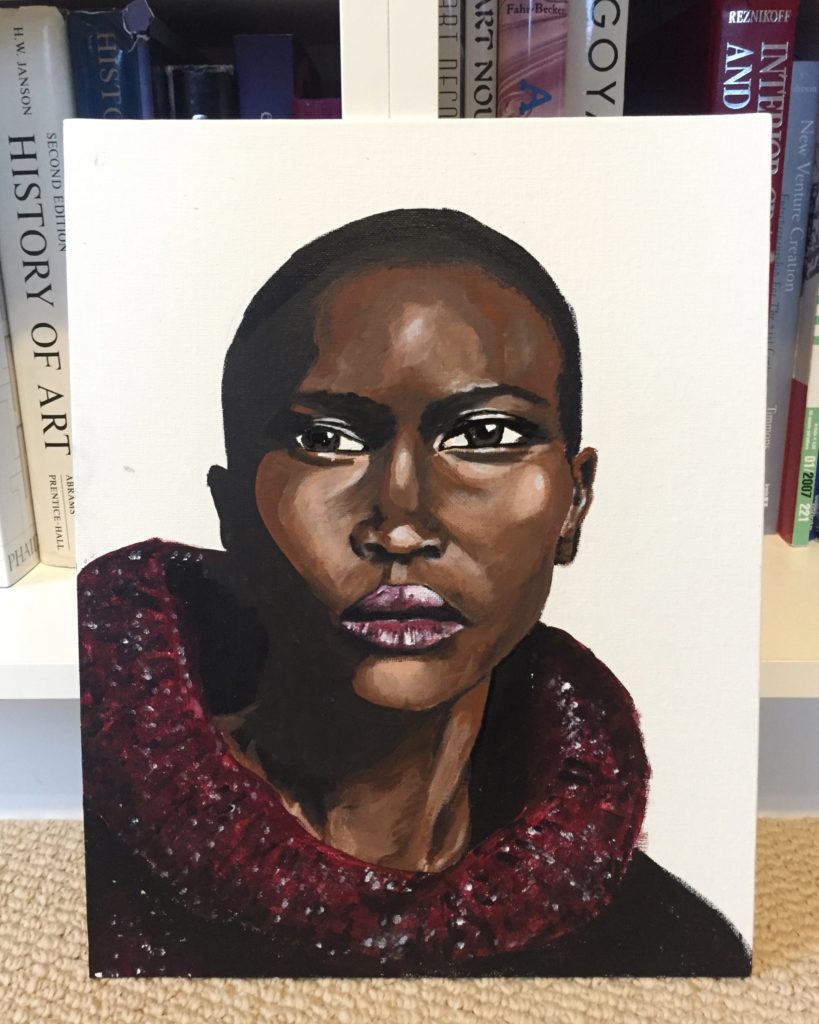
The process I used for Alek was very similar to Rufus. I took a bunch of progress photos to illustrate it:

The top 3 photos show what I did in my first session. It takes me about an hour to get down the initial “sketch”. In this case (as with Rufus), I did use a very rough pencil sketch as a guide – mostly to ensure I had the shape of the head done properly. Then, over the course of about a week or so, I worked to refine each component of the face.
Finding inspiration that speaks to me is one of the hardest parts. I gravitate towards editorial photos because they tend to feature more “arty” shots with dramatic lighting. Finding the right photo online can be time-consuming. In effect, I am looking for something that approximates an image or idea I have in my head; a lot of magazine spreads look, well, too commercial to serve as a basis for a portrait. After Alek, I struggled a bit to find something that spoke to me but eventually I chose this photo of Saoirse Ronan.
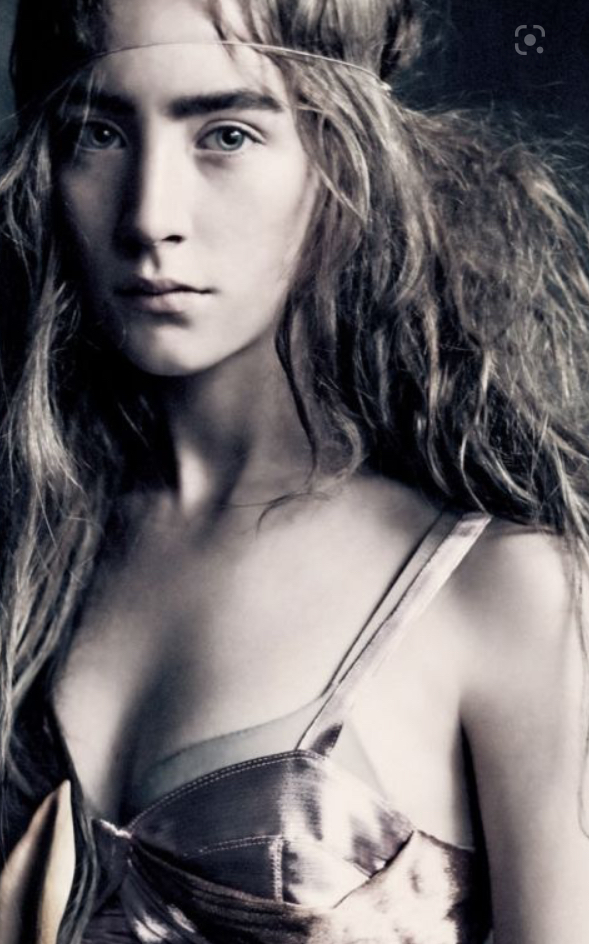
To me, it’s the kind of picture that begs to be painted. I could see it, in my mind’s eye, painted. Turned out, the reality was a little more challenging. Because her colouring is much lighter than either Rufus or Alek, I had to be more subtle with my shading to retain the ethereal effect of the photo.
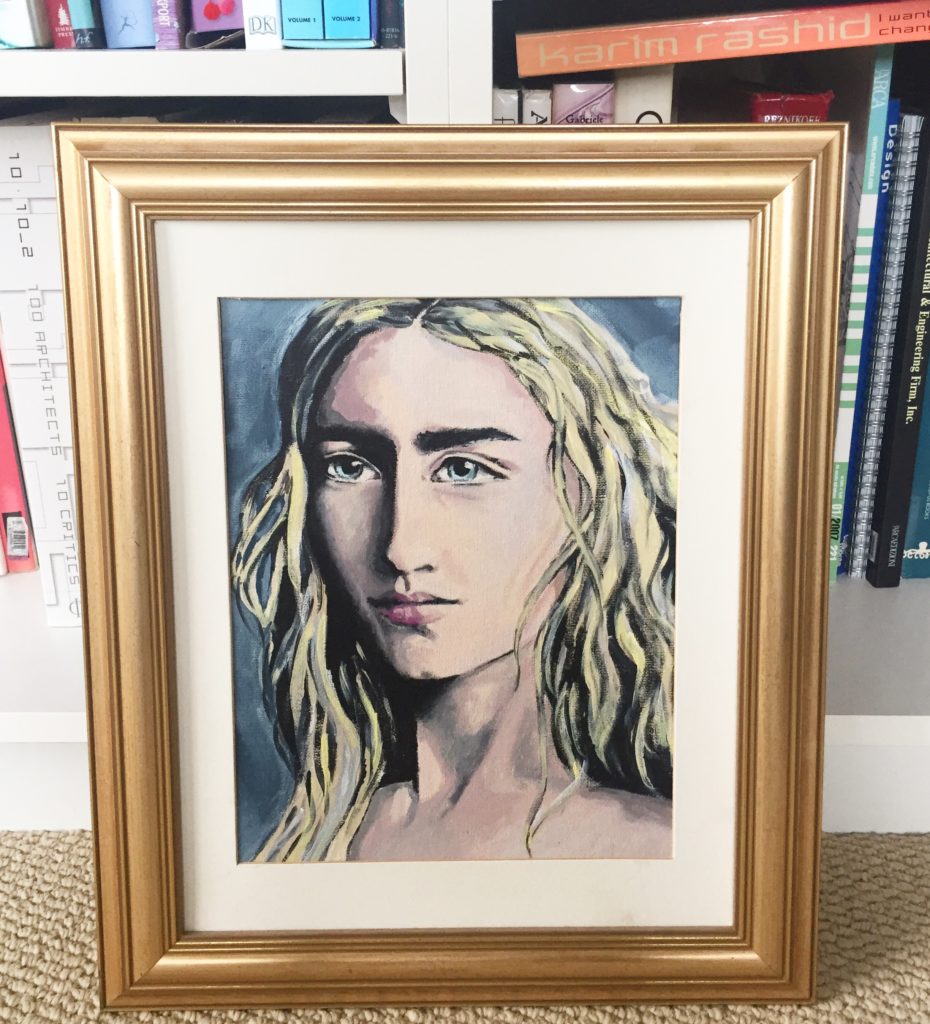
I think I did okay, but I struggled with the skin tone and shadows a lot. Here are the progress shots:
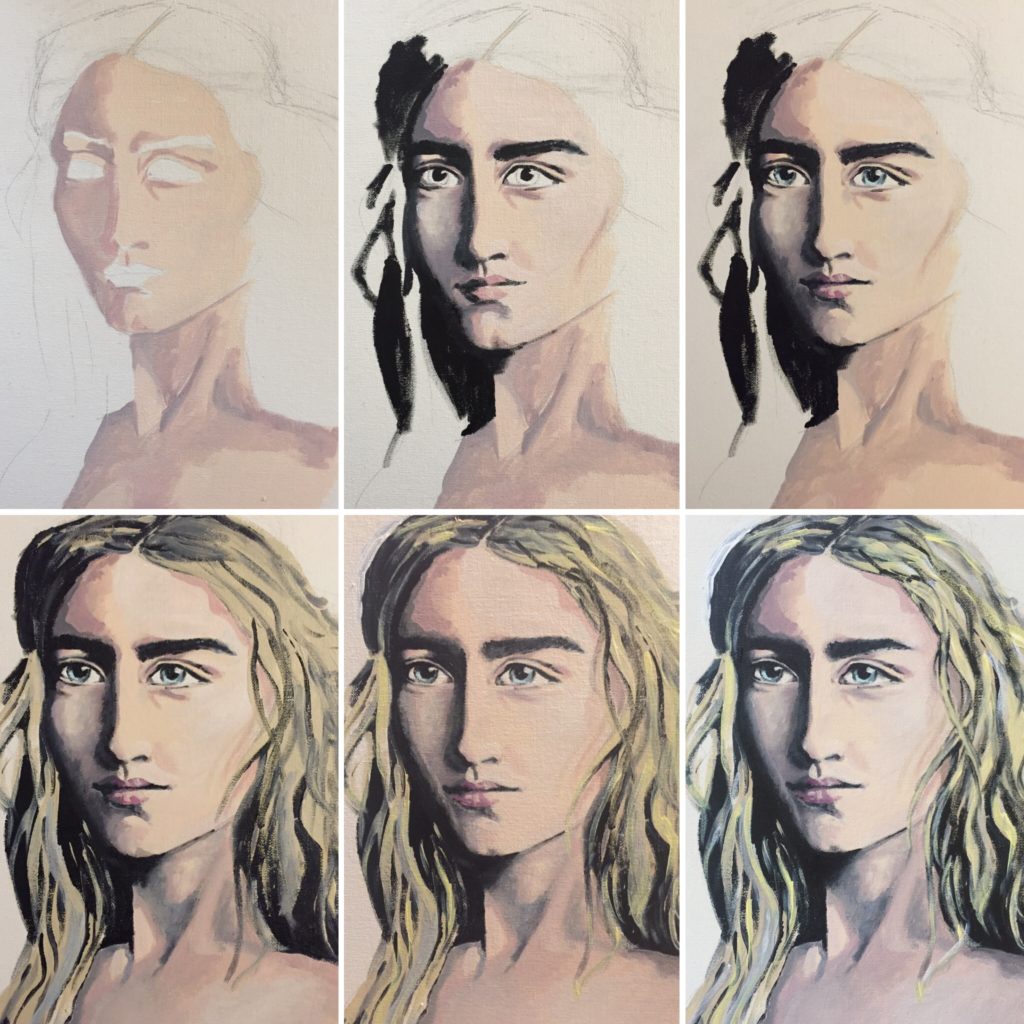
But another quantum leap was around the corner. I fell in love with this photo, and decided to double down on the whole “ethereal, Pre-Raphaelite” vibe.
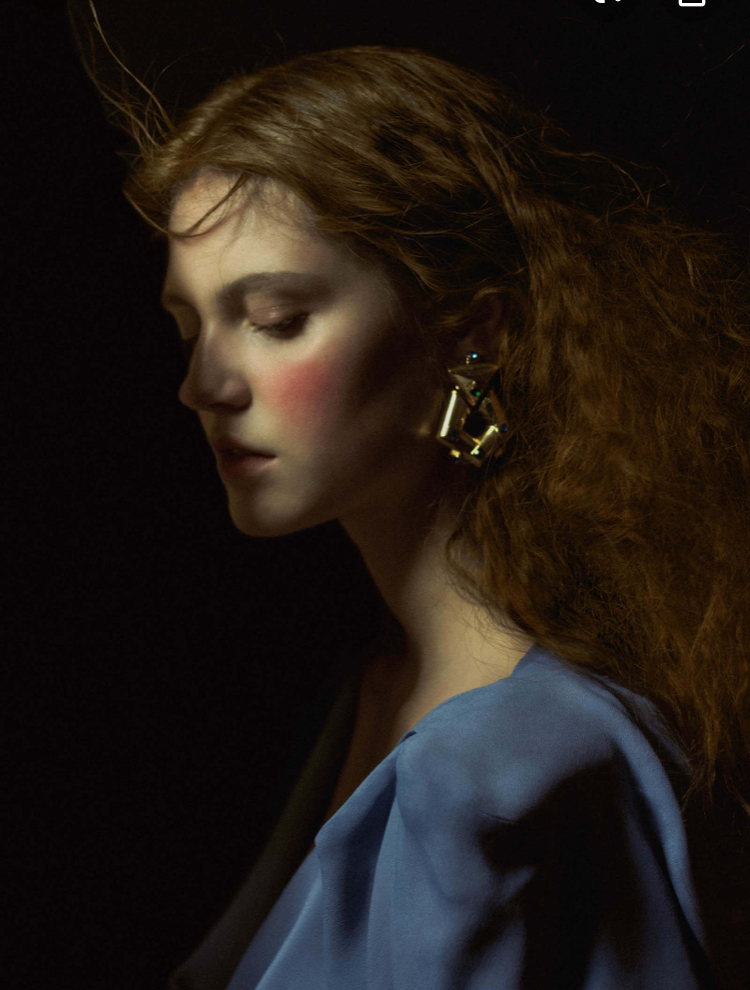
It also happened that I had just purchased a couple of black canvases. I had used one for a still life, and quickly learned that painting on black is a whole other kettle of fish. Nonetheless, I decided I would do just that for this portrait. Brave or foolhardy, you decide. Luckily, I managed a bit of a Hail Mary pass, and summoned up some new techniques (using my fingers for blending! just like the old days!) that helped me pull it together.
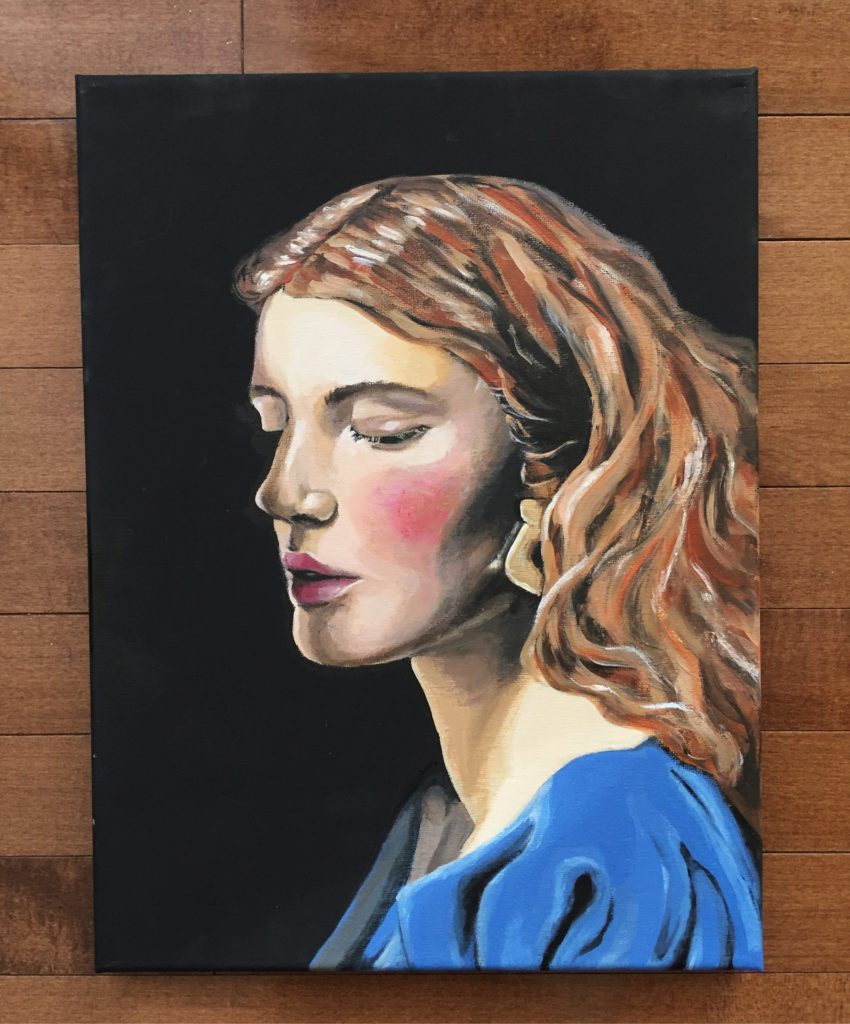
Next to Alek, this is my current favourite painting. I love it so much, even though I made a bit of a muck of the dress fabric and the earring. Progress shots:

Again, I’m not sure if this post is a good testimonial for the learn-as-you-go approach to picking up a new hobby, but I hope it shows that, no matter where you start, practice does tend to lead to improvement no matter how stubborn you are.
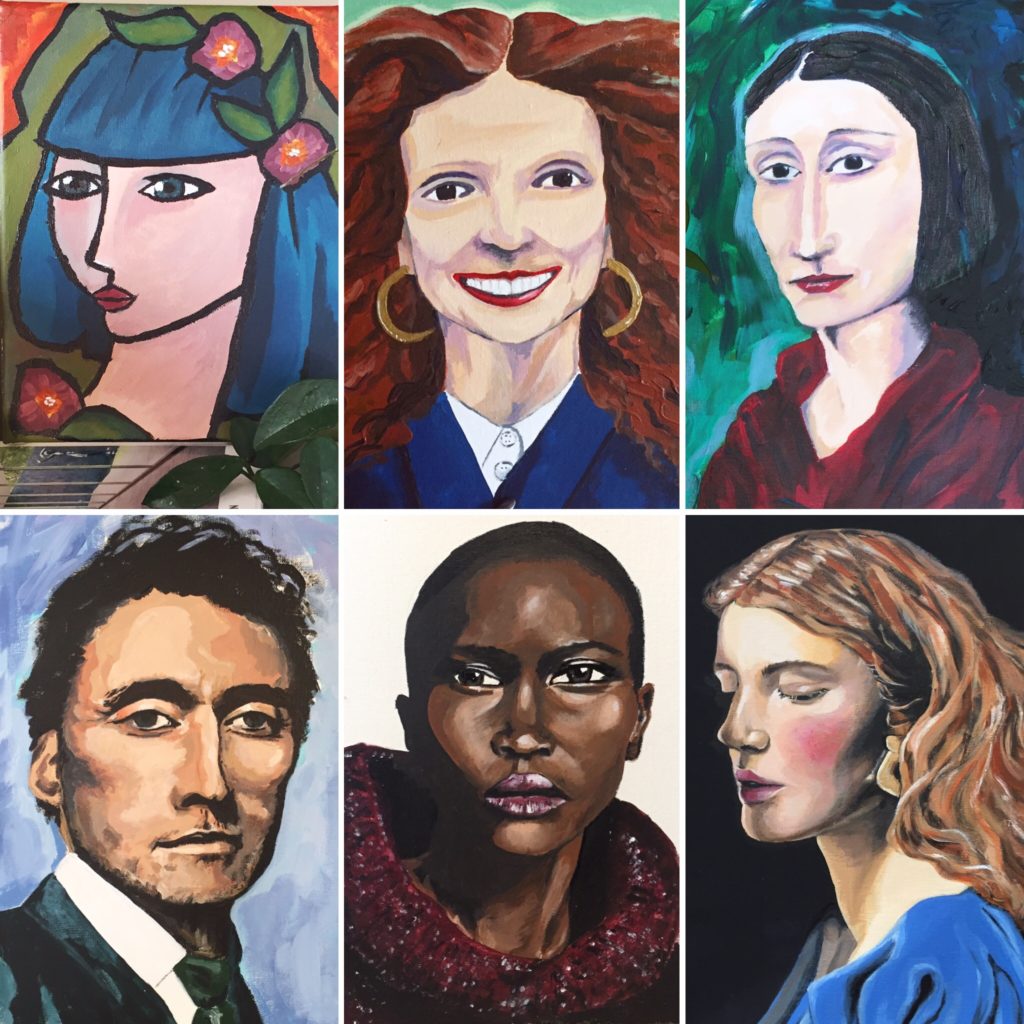

I am so impressed and inspired by your work and progress. Thank you for sharing!
Thank you, Amanda!
Wow!!! How amazing! I must say, I was relieved when I saw that you had prior art experience because holy crap, these are amazing! Even though you can see the progression of technique, I think all of the styles could actually stand alone, ie it’s more progression of technique rather than simply skill (though that’s there too). Loved reading this post! Inspires me to try to find more time to paint. Oh p.s Picasa has a setting (I’m sure on many apps too but I’m tech illiterate for the most part) where you can put that filter (a la Rufus) on any photo. Very helpful for identifying elements of shape/colour when learning to paint!
Good to know about that filter. I’ve gotten better at doing that kind of analysis by (naked) eye, but sometimes having the “cheat” would make my life easier (especially with very light complexions).
I was verrrrry rusty when I started painting this summer, but there has to be some kind of muscle memory or something, because eventually things started to come back to me. Even my drawing skills are improving (slowly). But I don’t feel like a natural born artist – is there such a thing? – so everything feels like a challenge.
Your description of drawings the angles that you see instead of the nose is right on the money. There’s a book called Drawing on the Right Side of the Brain that is all about this technique.
Thanks for sharing the recc!